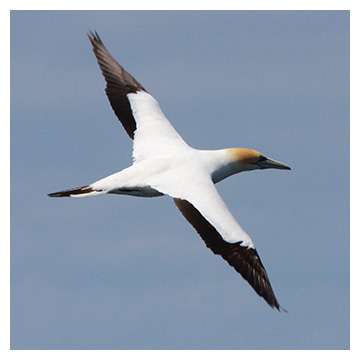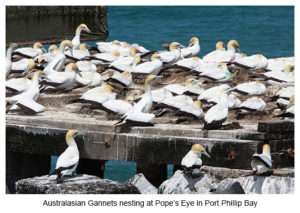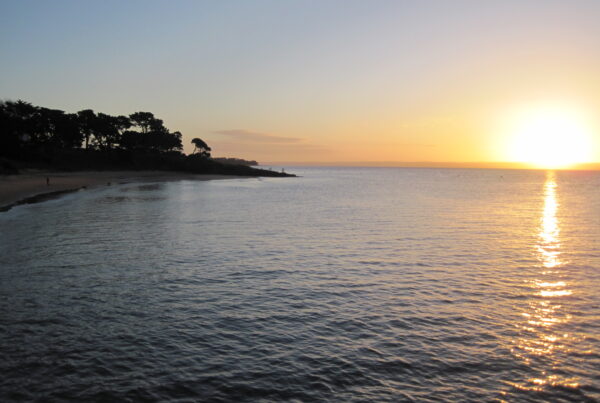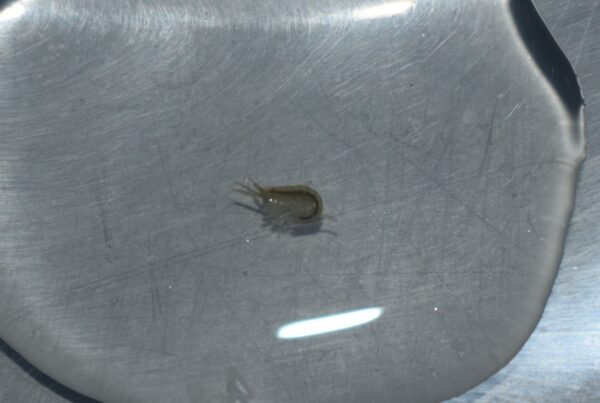Weekly Creature Feature. Have you seen this bird flying over Port Phillip Bay?
This is the Australasian Gannet, a common sight over the waters of Port Phillip Bay. It is a large seabird that lives along the southern Australian coast and across to New Zealand. It is predominantly white with black edges to its wings, a buff-yellow head, and a blue-grey beak. The adult gannets weigh over 2 kilograms and have a wingspan of close to 2 metres.
Australasian Gannets can be seen flying over the water before halting their flight and diving into the water. In the last few metres of their dive, they stretch their wings back over their body creating a streamlined shape before diving to depths of around 10 metres. They can also swim once underwater using their wings and webbed feet to chase and catch the schooling fish and squid they eat. They eat their catch underwater allowing them to catch another meal if available but also to avoid other birds stealing their meal.
In Port Phillip Bay, gannets feeding can indicate the presence of dolphins. When dolphins are feeding, they drive schooling fish together and towards the surface, which brings them in reach of the diving gannets. So, if you see Australasian Gannets diving, take a close look around the area to see if any dolphins are present. Research by Deakin University has shown that birds feeding in the deeper waters of Bass Straight rely on whales and dolphins to drive their food towards the surface and that they eat more than one fish per dive. While in Port Phillip Bay a different feeding strategy was recorded with the gannets, when not aided by dolphins, following sandbanks looking for food and usually catching only one fish at a time.
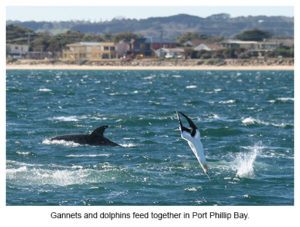 The body of the Australasian Gannet has many adaptations to help them find food and perform their amazing dives. They have keen eyesight that enables them to detect fish below the water’s surface and determine the depth of their prey. To prevent them damaging themselves when diving from heights of up to 30 metres, they have air sacs in their head and chest which they inflate to absorb the impact. Instead of open nostrils on their bill which would fill with water when diving, gannets breathe through slits at the corner of their mouths which they cover when diving. Their bill has backward-facing serrations to help them grasp their prey, which they often consume under the surface.
The body of the Australasian Gannet has many adaptations to help them find food and perform their amazing dives. They have keen eyesight that enables them to detect fish below the water’s surface and determine the depth of their prey. To prevent them damaging themselves when diving from heights of up to 30 metres, they have air sacs in their head and chest which they inflate to absorb the impact. Instead of open nostrils on their bill which would fill with water when diving, gannets breathe through slits at the corner of their mouths which they cover when diving. Their bill has backward-facing serrations to help them grasp their prey, which they often consume under the surface.
Australasian Gannets breed in colonies on offshore islands or at a few mainland rookeries. In Port Phillip Bay they use Pope’s Eye as a rookery where upwards of 500 pairs breed, laying their single egg between August and December. The eggs hatch after 44 days and the young fledge around 100 days after hatching.
Watch these amazing gannets dive and chase their prey. YouTube Video:

If you would like to learn more about the huge diversity of life that can be found along our coasts and shorelines please contact Education Director Mandy Robertson on education@dolphinresearch.org.au

